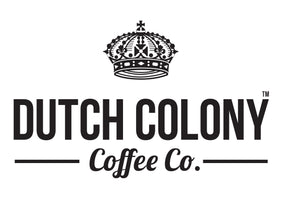New Single Origin Coffee: Ethiopia Sidamo Nansebo Bulga
This is Dutch Colony first purchase of this natural processed grade 1 Ethiopians from the farm of Nansebo Bulga. The coffee was grown by smallholder farmers living around the kabele (town) of Bulga, in Oromia County. Our exporter pays more than the market price for a kilogram of red cherry, and those farmers that bring quality red cherry are paid a cash incentive, ensuring higher-than-average overall quality.Coffee is selectively hand-picked before being delivered to the mill collection points, usually within 5 km of the producers’ homes.
If you, like everyone else that have been following our articles in this blog, have read this article sometime in May 2019, you would probably have known by now (and get a little excited!) of this single origin from Sidamo, Ethiopia. We were smitten by it on the cupping table during buying season and first introduced it as part of our seasonal Katapult Blend launch. After working on it for two months and a few roasting profiles later, the question was - "Why not as a single origin espresso?"
This is Dutch Colony first purchase of this natural processed grade 1 Ethiopians from the farm of Nansebo Bulga. The coffee was grown by smallholder farmers
living around the kabele (town) of Bulga, in Oromia County. Our exporter pays more than the market price for a kilogram of red cherry, and those farmers that bring quality red cherry are paid a cash incentive, ensuring higher-than-average overall quality.Coffee is selectively hand-picked before being delivered to the mill collection points, usually within 5 km of the producers’ homes.
This is all done with a purpose to reverse out and to re-engineer the original plans that the Ethiopian Commodity Exchange (ECX) had in 2008, to began the centralization of all coffee exports through the Ethiopia Commodity Exchange (ECX), where the coffees were ‘anonymised’, stripped of any information other than region, in the interest of the farmers, who were meant to receive top dollar for quality regardless of the ‘name’ of the washing station or farm. Coffees moving through the ECX were (still are) delivered to certified coffee labs, where they were cupped according to profile then graded and marked generically for export. This ‘equalising’ measure certainly benefitted some producers, but it had the negative impact of eliminating most roasters’ and importers’ ability to provide accurate information of the precise traceability of coffees. Thus by paying more for the red cherry in return for even better quality, we are promised (by our exporter) a greater quality in the cup of this Nansebo Bulga.
At least once a day, the collected coffee cherry is delivered to the mill, where it is floated and then delivered to dry on raised beds. Here, it will be thinly spread and regularly turned over the course of several weeks, or until it reaches 12% humidity according to the moisture metre.
Having worked on its roasting profile the last 2 months as part component of our Katapult Blend, one would have thought it is as simple as replicating the roast profile and now bagging it as a single origin espresso. Instead of taking the same path, our roasting duo went back to the cupping table, revisiting the roast logs and making changes to the initial roast profile, to come out with another profile that works not only as an espresso but also delicious in your preferred brewing method.
With notes of orange tea, mixed berries and bergamot on the cupping table as well as a pourer brew, and lemon candy, citrus fruits and black tea when dialled in as an espresso (refer to our recommended espresso parameters at the bottom of this article to get this profile), this is a single origin that will add sparkle to your home brewing experience. If you enjoy your coffee as a 'flattie' or a small latte instead, get excited to be tasting milk tea, orange biscuit and floral notes on your palate.
To those of you here who prefers to have your coffee in the shops rather then the hustle of brewing at home, you will also be pleased to know that all our 3 shops are now serving them as both a hot filter brew and as a cold brew, as well as available in the espresso hopper from the 16th of October onwards.
To the home brewing enthusiasts, below information is for you to geek out on the coffee. Enjoy!
| Farm: | Nansebo Bulga |
| Washing Station Owner: | Ato Girma Wondimu |
| Varietal(s): | Local Landraces & JARC 74 selections |
| Processing: | Natural |
| Altitude: | 1,850 to 2,350 metres above sea level |
| Owner: | Various smallholder farmers |
| Town: | West Arsi (Nansebo), Bulga |
| Region: | Southern Nations, Oromia, Sidamo |
| Country: | Ethiopia |
| Total size of farm: | Under 1 hectare on average |
Brew it like Dutch Colony:
As a Filter
1:14 ratio of coffee to water, medium-coarse grind, 90 degrees celcius water, first pour to bloom at 2x the coffee weight (i.e 15gm of coffee so pour 30gm of water to bloom for 30 secs) and a continuous long pour to reach the desired ratio with a total brewing time of 2 minutes. Best to be enjoyed as the beverage slightly cools!
As an Espresso
1:2 ratio of coffee to water, packing about 24gm of coffee (we use a 22gm VST basket) and extracting 48gm of espresso out, between 25 to 27 seconds. For milk beverages, we cut it a little faster, getting close to a 1:1.5 ratio.





